Content Governance
Learn how content governance can help you create and publish high-quality content consistently and deliver you a better return on investment.
 Content governance is the process of establishing rules and guidelines for creating, editing, and publishing content.
Content governance is the process of establishing rules and guidelines for creating, editing, and publishing content.
This ensures that all content is consistent, accurate, and aligned with your organization’s overall messaging and goals.
In this lesson, we look at the importance of content governance and the role it plays in helping to maintain consistency and quality in all of your content.
***
What Is Content Governance?
Content governance is the process of establishing rules and guidelines for creating, editing, and publishing content in your organization. It is a framework for managing the overall strategy, production, distribution, and archiving of your content.
The goal of content governance is to ensure that all of your content is consistent, accurate, and aligned with your organization’s overall messaging and goals while addressing legal and compliance requirements, performance measurement, and retention policies.
Examples of content governance include:
- Defining roles and responsibilities for content creation and editing helps to ensure that your content is created and edited by the appropriate individuals or teams and that the content review and approval process is followed and actioned by all the necessary parties. (See Content Team)
- Setting guidelines for messaging, tone, and style of content ensures that your content is consistent in terms of language, tone, and style, which helps to maintain a strong and consistent brand message. (See Content Style Guide)
- Setting guidelines for the use of images and videos ensures that all visual content is consistent in terms of style and quality, which helps to maintain a strong and consistent brand message.
- Creating a process for reviewing and approving content ensures that your content is accurate and meets your organization’s standards before it is published. (See Content Workflow)
- Implementing a content management system allows your organization to organize and streamline its content creation and publishing process, make it easier for multiple users to access and edit content, manage, track, and measure the effectiveness of the content, and control access and permissions for content creation and editing. (See CMS)
- Establishing a content calendar and production workflow helps to ensure that your content is created and published on schedule and that it goes through the necessary review and approval steps before being published. (See Content Calendar)
- Archiving and retention policies ensure that your content is kept safe and can be recovered in case of any loss. (See Content Documentation)
- Legal and compliance requirements ensure that your content is compliant with legal and regulatory requirements.
- Measuring performance and monitoring ensures that your organization is able to evaluate the performance of its content to identify what’s working and what’s not and make adjustments to the content and governance process accordingly. (See Content Tracking)
- Regularly reviewing and updating guidelines helps to ensure that the guidelines remain relevant and effective and that they are followed consistently.
- Having a legal compliance review process in place helps to ensure that your content is compliant with legal requirements such as copyright laws and advertising regulations.
- Implementing a governance board or committee helps to ensure that the content governance process is followed consistently and that any issues or concerns are addressed in a timely manner.
Benefits Of Content Governance
The key benefits of having established rules and guidelines for creating and publishing content through content governance include the following:
- Consistency: Establishing guidelines for tone, style, and messaging ensures that all content is consistent and helps build trust and credibility with the audience. Example: All press releases are to be written in a formal and professional tone, using the Chicago Manual of Style.
- Efficiency: Guidelines streamline the content creation and approval process, reducing errors, and making the process more efficient. Example: Create a content review process with specific steps, roles, and time frames defined for each step, and make sure that the content is reviewed and approved in a timely manner.
- Brand alignment: Guidelines help to ensure that all content aligns with the brand’s messaging and values. Example: All social media posts are to reflect the brand’s mission and values.
- Legal compliance: Guidelines help to ensure that all content is compliant with legal requirements such as copyright laws and advertising regulations. Example: all images and videos used in content must be properly licensed and attributed.
- Better ROI: Guidelines can help to ensure that all content is effective in achieving its goals and generating a positive return on investment (ROI). Example: Establish a clear set of guidelines and metrics to measure the success of our content marketing campaign so we can optimize the content to generate a better ROI.
Content Governance Types
Content governance models vary based on the organization’s structure, goals, and content strategy.
Here are the main types:
- Centralized Content Governance: In this model, a central authority or team oversees all content-related decisions and processes. It ensures consistency and quality but may limit agility.
- Decentralized Content Governance: Content ownership and decision-making are distributed across various departments or teams. This model allows for flexibility and responsiveness but can lead to inconsistencies.
- Hybrid Content Governance: Combining aspects of both centralized and decentralized models, this approach balances control and flexibility. Certain standards and guidelines are set centrally, while individual departments or teams have autonomy within those parameters.
- Ad Hoc Content Governance: Content governance processes are informal and lack a structured framework. This model is common in smaller organizations or during early stages of content development. It may result in inconsistencies and inefficiencies.
- Collaborative Content Governance: Content decisions involve input from multiple stakeholders across the organization. Collaboration tools and processes facilitate communication and alignment, ensuring content meets diverse needs.
Each model has its advantages and challenges, and organizations often tailor their content governance approach to suit their specific requirements and culture.
Why Rules And Guidelines For Creating, Editing, And Publishing Content Are Important
Rules and guidelines for creating, editing, and publishing content are important because they ensure consistency and accuracy in all content and help to maintain a strong and consistent brand message, which is essential for building trust and credibility with audiences.
Additionally, they help to ensure that all content is of high quality, which is important for engaging and retaining audiences.
Here are some examples of rules and guidelines you can implement for creating, editing, and publishing content:
Tone And Style Guidelines
Specify the tone and style of different types of content, such as formal and professional for business proposals, and conversational and friendly for social media posts.
Example: All press releases should be written in a formal and professional tone and style.
Grammar And Formatting Guidelines
Define the rules of grammar, punctuation, capitalization, and formatting for your content.
Example: Use the Chicago Manual of Style as the primary guide for grammar, punctuation, capitalization, and formatting.
Branding And Messaging Guidelines
Specify how content should align with your brand’s messaging and values.
Example: All social media posts should reflect the company’s mission and values.
Legal Compliance Guidelines
Ensure that all content is compliant with legal requirements such as copyright laws and advertising regulations.
Example: All images and videos used in content must be properly licensed and attributed.
Content Creation Guidelines
Define who is responsible for creating different types of content, such as blog posts, social media posts, and marketing materials.
Example: The content creator is responsible for writing blog posts and social media posts.
Content Editing Guidelines
Define who is responsible for editing different types of content, such as proofreading, fact-checking, and legal review.
Example: The editor is responsible for proofreading and fact-checking all written content.
Content Approval Guidelines
Describe the approval process, including who is responsible for reviewing and approving content before it is published.
Example: All written content must be reviewed and approved by the editor before being submitted to the approver.
Content Archiving Guidelines
Specify guidelines for archiving or removing content that is no longer relevant or useful.
Example: All content that is more than 2 years old should be archived.
Metrics And Analytics Guidelines
Set guidelines for measuring and analyzing the performance of content, and using the data to make adjustments to the content and governance process accordingly.
Example: Use Google Analytics to track the performance of the website and adjust the content accordingly.
Review and Update Guidelines
Specify how your organization will ensure the guidelines themselves remain relevant and effective.
Example: Review guidelines every 6 months and update them as needed.
Additional Guidelines
Include additional guidelines in your documentation.
For example:
Forum / User-Generated Guidelines
Here are some widely acceptable guidelines you may want to include in your documentation for posting user-generated content on forums, membership sites, etc. :
- Respectful Communication: Encourage members to communicate respectfully, avoiding personal attacks, harassment, or offensive language.
- Supportive Environment: Foster a supportive and inclusive community where members feel safe and comfortable sharing their thoughts and experiences.
- Content Relevance: Post content relevant to the forum’s purpose and categories to maintain a focused discussion.
- No Spamming: Avoid excessive self-promotion, spam, or unrelated content. Prohibit the posting of repetitive, irrelevant, or promotional content to maintain the quality of discussions.
- Membership Tiers: Align content with the appropriate membership tiers to maintain exclusivity and fairness.
- Contribution Quality: Encourage high-quality contributions, such as long-form blog posts, videos, interviews, webinars, and relevant resource lists.
- Sophistication: Acknowledge the sophistication of the community and adhere to higher standards of discussion.
- Content Protection: Implement role-based content protection to ensure access aligns with membership privileges.
- Copyright Compliance: Emphasize the importance of respecting copyright laws and not posting copyrighted material without proper authorization.
- Constructive Criticism: Encourage constructive feedback and discussions while discouraging negative or unhelpful comments.
- User Privacy: Respect members’ privacy by refraining from sharing personal information without consent and adhering to data protection regulations.
- Updates and Amendments: Reserve the right to update or amend forum guidelines as necessary, with clear communication to all members.
- Moderation Policies: Outline the consequences of violating forum guidelines, including warnings, temporary suspensions, or permanent bans, to ensure accountability.
- Report Functionality: Encourage members to report inappropriate content or behavior to moderators for prompt action.
The Role of Content Governance
Content governance plays an important role in areas like:
- Maintaining consistency in your brand messaging
- Ensuring the quality of your content
- Managing access and permissions for creating and editing content
- Tracking and measuring the effectiveness of your content
Let’s take a look at each of these areas.
Maintaining Consistency In Brand Messaging
Content governance plays an essential role in maintaining consistency in your brand messaging by ensuring that all content is consistent in terms of language, tone, and style, and by providing guidelines for visual elements and a process for reviewing and approving content.
This helps to maintain a strong and consistent brand message, which is crucial for building trust and credibility with your audience.
Examples of how content governance helps to maintain consistency in your brand messaging include:
- Defining a specific tone and style for all content ensures that all content is consistent in terms of language, tone, and style.
- Setting guidelines for the use of images and videos ensures that all visual content is consistent in terms of style and quality.
- Creating a brand style guide sets guidelines for the use of colors, typography, and other visual elements that are used across all content.
- Implementing a content management system allows your organization to manage, track, and measure the effectiveness of your content, and to control access and permissions for content creation and editing.
- Having a centralized team responsible for creating, editing, and publishing content ensures that all content is consistent and aligned with your organization’s overall messaging and goals.
- Having a content review and approval process helps to ensure that all content is accurate and meets your organization’s standards before it is published, which is important for maintaining the credibility of your organization and the consistency of your brand message.
Ensuring Quality Of Content
Content governance plays a crucial role in ensuring the quality of your content by establishing rules and guidelines for creating, editing, and publishing content. These rules and guidelines help to ensure that all content you publish will be accurate, relevant, and of high quality.
Examples of how content governance helps to ensure the quality of your content include:
- Creating a process for reviewing and approving content ensures that all content is accurate and meets your organization’s standards before it is published.
- Establishing guidelines for research and fact-checking ensures that all content is based on accurate and credible sources, which helps to ensure the quality of your content.
- Setting standards for the use of grammar, punctuation, and spelling ensures that all content you create will be free of errors, which helps to ensure the quality of your content.
- Implementing a content management system allows your organization to manage, track, and measure the effectiveness of your content, and to control access and permissions for content creation and editing. This ensures that the content is of high quality and meets your standards.
- Having a centralized team responsible for creating, editing, and publishing content ensures that all content is consistent and aligned with your organization’s overall messaging and goals and that the quality of your content is maintained.
- Having a content review and approval process ensures that all content you produce is accurate, relevant, and of high quality before it is published, which is important for maintaining the credibility of your organization and the quality of your content.
Managing Access And Permissions For Content Creation And Editing
Content governance plays an important role in managing access and permissions for content creation and editing.
By establishing rules and guidelines for creating, editing, and publishing content, content governance ensures that only authorized individuals have access to create and edit content, and that content is reviewed and approved by the necessary parties.
Examples of how content governance helps to manage access and permissions for content creation and editing include:
- Defining roles and responsibilities for content creation and editing ensures that all content is created by the appropriate individuals and is reviewed and approved by the necessary parties.
- Creating a process for reviewing and approving content ensures that all content is accurate and meets your organization’s standards before it is published and that only authorized individuals have access to create and edit content.
- Implementing a content management system allows your organization to manage, track, and measure the effectiveness of your content, and to control access and permissions for content creation and editing. This ensures that only authorized individuals have access to create and edit content.
- Having a centralized team responsible for creating, editing, and publishing content ensures that all content is consistent and aligned with your organization’s overall messaging and goals and that only authorized individuals have access to create and edit this content.
- Establishing an access control system ensures that only authorized individuals have access to create and edit content, and that content is reviewed and approved by the necessary parties.
- Assigning different levels of permissions allows your organization to assign different levels of permissions to different users, such as content creators, editors, and reviewers, to ensure that only authorized individuals have access to create and edit content.
Tracking And Measuring The Effectiveness Of Content
Content governance plays a crucial role in tracking and measuring the effectiveness of your content by providing a framework for managing, analyzing, and reporting on the performance of your content.
This allows your organization to evaluate the performance of your content, make necessary changes, and improve the effectiveness of your content over time.
This also helps your organization to make data-driven decisions, which can lead to a more effective content marketing strategy and ultimately increase audience engagement.
Examples of how content governance helps in tracking and measuring the effectiveness of your content include:
- Implementing a content management system allows your organization to manage, track, and measure the effectiveness of your content, including metrics such as views, shares, and engagement.
- Establishing key performance indicators (KPIs) for content allows your organization to track and measure the effectiveness of your content by monitoring specific metrics that align with your goals and objectives.
- Creating a process for analyzing and reporting on content performance allows your organization to evaluate the performance of your content and make necessary changes, such as adjusting the tone, style, or format of your content.
- Having a centralized team responsible for creating, editing, and publishing content ensures that all content is consistent and aligned with your organization’s overall messaging and goals and that your team is able to track and measure the effectiveness of your content.
- Using web analytics tools allows your organization to track and measure the effectiveness of your content by monitoring website traffic, bounce rates, and other metrics.
- Conducting audience research allows your organization to understand your target audience, their preferences, and behaviors, and make necessary adjustments to your content to make it more effective.
Establishing Rules and Guidelines
Establishing content governance rules and guidelines cover areas like:
- Defining roles and responsibilities for content creation and editing
- Setting guidelines for tone and style of content
- Creating a process for reviewing and approving content
- Implementing a content management system
Let’s take a look at each of these areas.
Defining Roles And Responsibilities For Content Creation And Editing
By following the steps and suggestions below, your organization can define roles and responsibilities for content creation and editing effectively, which helps to ensure that all content is created by the appropriate individuals and is reviewed and approved by the necessary parties:
Step 1: Identify the key players involved in content creation and editing.
This includes individuals such as content creators, editors, marketers, designers, approvers, and legal or compliance teams.
Step 2: Assign specific roles and responsibilities to each member of the team.
Create guidelines for who is responsible for creating and editing different types of content.
For example:
- Content Creator: Research, write, and produce high-quality and engaging content that aligns with the brand’s messaging and goals.
- Editor: Review, proofread, fact-check, and edit content to ensure that it is accurate, grammatically correct, and consistent with the organization’s standards.
- Marketer: Promote the content through various channels to reach the target audience and increase engagement.
- Designer: Create visual elements for the content, such as images and infographics, to enhance the overall design and appeal of the content.
- Compliance or Legal Team: Ensure that the content is compliant with legal and regulatory requirements and that the organization is protected from any legal liabilities.
Step 3: Create a process for reviewing and approving content.
This process should clearly outline the steps that need to be taken before content is published, including who is responsible for reviewing and approving the content.
Step 4: Establish a system for tracking and measuring the effectiveness of content.
This system should be used by the team to monitor the performance of your content and make necessary changes.
Step 5: Communicate the roles and responsibilities to the team.
Make sure that each member of your team understands their specific roles and responsibilities, and how they fit into the overall content creation and editing process.
Also, make sure that everyone involved in content creation and editing understands the approval process.
Some suggestions to make this process effective:
- Make sure that the roles and responsibilities are clearly defined and communicated to your team members to avoid confusion and mistakes.
- Assign roles and responsibilities based on the skills and expertise of each team member.
- Review and update the roles and responsibilities regularly to ensure that they are aligned with your organization’s goals and objectives.
- Encourage collaboration and teamwork among team members to ensure that your content is of high quality.
Here’s a template you can follow to define roles and responsibilities for content creation and editing in your organization (modify it to suit your own needs):
1. Assign roles:
- Content creator: Writes and creates content
- Editor: Review, edit, and proofread content for accuracy and style
- Approver: Approves and publishes content
2. Establish clear guidelines:
- The content creator is responsible for writing blog posts and social media posts
- The editor is responsible for proofreading and fact-checking all written content
- The approver is responsible for reviewing all content before it is published
3. Define the approval process:
- All written content must be reviewed and approved by the editor before being submitted to the approver
- The approver must review and approve all content before it is published
4. Communicate the process:
- Send out an email to all team members outlining their roles and responsibilities in the content creation and editing process
- Hold a team meeting to discuss the process and answer any questions
- Review and communicate the process regularly to ensure that all team members are aware of changes.
Setting Guidelines For Tone And Style Of Content
Setting guidelines for the tone and style of content is an important aspect of content governance.
It ensures that all content is consistent in terms of language, tone, and style, which helps to maintain a strong and consistent brand message.
Here is a step-by-step guide on how to set guidelines for the tone and style of content:
Step 1: Define the tone and style of the brand.
This should align with your organization’s mission, values, and overall messaging.
Include guidelines for how the content should sound and feel.
For example, the content might be written in a friendly and conversational tone. Or, if your organization wants to present itself as professional, informative, and trustworthy, the tone of the content should be formal and informative, and the style should be clean and simple.
Also, clearly define the tone and style that should be used for different types of content. For example, a formal and professional tone for business proposals and a conversational and friendly tone for social media posts.
Step 2: Create a brand style guide.
This guide should include guidelines for language, tone, style, and visual elements such as typography, colors, imagery, and composition.
Provide examples of appropriate and inappropriate language: This can include a list of words or phrases that should be used or words or phrases that are considered offensive or insensitive and should be avoided in the content.
For example, the style guide could include examples of appropriate language and tone, such as the level of formality. Guidelines might specify that all content should use active voice and avoid jargon.
Step 3: Communicate the guidelines to the team.
Make sure that all members of your team understand and are familiar with the guidelines.
Create a checklist of items that need to be reviewed before content is published, such as grammar, tone, and style.
Share the style guide with the team, make it easily accessible, and provide training to the team members on how to use it effectively.
Step 4: Provide examples of content that align with the guidelines.
This will help team members to understand what is expected of them and make it easier for them to create content that aligns with the guidelines.
Step 5: Review and update the guidelines regularly.
As your organization and its audience evolve, the guidelines should be reviewed and updated to ensure that they align with your organization’s mission, values, and overall messaging.
Some suggestions to make this process effective:
- Make sure that the guidelines are clear, concise, and easy to understand.
Keep in mind the target audience and the purpose of the content while creating the guidelines.
- Encourage team members to ask questions and provide feedback on the guidelines.
- Use the guidelines to train new team members and as a reference for existing team members.
Here’s a template you can follow to set guidelines for the tone and style of content (modify it to suit your own needs):
1. Define the tone and style:
- Business proposals: Formal and professional
- Social media posts: Conversational and friendly
- Blog posts: Informative and engaging
2. Use a style guide:
- Use The Chicago Manual of Style as the primary guide for grammar, punctuation, capitalization, and formatting
- All headings must be in Title Case
- Use serial comma
- Use American English
3. Be specific:
- Use active voice in all written content
- Avoid using jargon
- Use subheadings to break up long paragraphs
- Use bullet points when listing items
4. Review and update regularly:
- Review guidelines every 6 months
- Update guidelines as needed based on feedback from team members and the audience.
Creating A Process For Reviewing And Approving Content
Creating a process for reviewing and approving content is an important aspect of content governance.
This ensures that all content is accurate and meets your organization’s standards before it is published, which is important for maintaining your credibility.
Here is a step-by-step guide on how to create a process for reviewing and approving content:
Step 1: Identify the key players involved in content review and approval.
This includes individuals such as content creators, editors, managers, legal or compliance teams, and other stakeholders.
Step 2: Assign specific roles and responsibilities to each member of the team.
For example, content creators may be responsible for researching and writing content, editors may be responsible for reviewing and editing content, managers may be responsible for approving the content, and legal or compliance teams will be responsible for making sure that the content is compliant with legal and regulatory requirements.
Step 3: Create a checklist of items to be reviewed before content is published.
This checklist should include items such as grammar, tone, style, accuracy, relevance, and compliance with legal and regulatory requirements.
Step 4: Establish a timeline for the review and approval process.
This timeline should include deadlines for when each stage of the process should be completed.
Step 5: Communicate the process to the team.
Make sure that all members of your team understand the process and their specific roles and responsibilities.
Step 6: Implement a system for tracking and measuring the effectiveness of the process.
This system should be used to monitor the performance of the process and make necessary changes.
Here are some additional suggestions to make this process effective:
- Use a content management system (CMS) to manage and track the review and approval process. This allows for easy access and collaboration among team members, and the ability to track the progress of the review and approval process.
- Establish a workflow: Use a workflow management tool or create a content calendar to help track the progress of each piece of content and ensure that it is reviewed and approved on time.
- Encourage collaboration and feedback among team members during the review and approval process. This allows for multiple perspectives on the content and can lead to a more accurate and high-quality final product.
- Have a final approval step by senior management or a legal team before publishing the content. This ensures that the content is legally and ethically compliant, and aligns with the overall goals and messaging of the organization.
- Review and update the process regularly. As the organization and its audience evolve, the process should be reviewed and updated to ensure that it is still effective and aligned with the organization’s goals and objectives.
- Provide training to the team members on how to use the process effectively, and make sure that all team members are aware of the process and their specific roles and responsibilities.
- Use data and analytics to track the progress of the content review and approval process, and make necessary changes to improve the process over time.
Here’s a template you can follow to create a process for reviewing and approving content (modify it to suit your own needs):
1. Define the content review process:
- Step 1: Content creation
- Step 2: Initial review by the content creator
- Step 3: Peer review by a team member
- Step 4: Final review by the manager
- Step 5: Approval and publication
2. Assign roles and responsibilities:
- Content creator: Writes and creates content
- Peer reviewer: Reviews content for accuracy, grammar, and style
- Manager: Approves and publishes content
3. Establish a workflow:
- Use Trello to track the progress of each piece of content and ensure that it is reviewed and approved on time
4. Set up guidelines:
- All marketing materials need to be reviewed and approved before publication
- All blog posts need to be reviewed and approved by a peer before publication
- All press releases need to be reviewed and approved by the manager before publication
5. Communicate the process:
- Send out an email to all team members outlining the content review process
- Hold a team meeting to discuss the process and answer any questions.
Implementing A Content Management System
Implementing a content management system (CMS) can help organize and streamline your content creation and publishing process.
Here is a step-by-step guide on how to implement a CMS:
1. Identify your needs
Determine what features and functionality you need in a CMS. For example, do you need a CMS that allows for multiple users and different levels of access, or one that integrates with other tools such as marketing automation software?
Example: Your company needs a CMS that can handle a high volume of content, allows for multiple users and different levels of access and integrates with the company’s marketing automation software.
2. Research and compare options
Research different CMS options and compare their features, pricing, and scalability. Some popular open-source CMS options include WordPress, Drupal, and Joomla.
Choose a CMS
Select a CMS that best fits your needs and budget.
Install and set up the CMS
Follow the instructions provided by the CMS to install and set up the system on your webhosting account.
Customize the CMS
Customize the CMS to fit your specific needs. This may include adding plugins, creating templates, and configuring settings.
Create and organize content
Create and organize your content within the CMS. This may include creating categories and tags to organize content and creating a workflow for content creation and approval.
Train users
Train users on how to use the CMS, including how to create, edit, and publish content.
Test and launch
Test the CMS to ensure it is functioning properly. Once you are satisfied with the CMS, launch it to your audience.
For example, your company may decide to use WordPress as its CMS.
Learn more about choosing a content management system.
Content Governance – FAQs
Here are frequently asked questions about content governance:
What is content governance?
Content governance involves the overarching management and structured control of content across an organization. This ensures that all content aligns with company standards and objectives.
Why is content governance important?
Content governance is critical for maintaining consistency, quality, and compliance in the content lifecycle. It ensures that every piece of content serves a specific purpose and meets established standards, ultimately enhancing effectiveness and accountability.
What are the main elements of a content governance model?
A content governance model typically includes structured processes, clear roles and responsibilities, and policies that guide content creation, management, and archiving. This model helps in achieving better control over content outcomes and efficiency.
How can I establish a content governance process?
Establishing a content governance process involves several steps:
- Defining content roles and responsibilities.
- Setting up detailed content creation and review workflows.
- Implementing policies for content usage and maintenance.
- Training team members on governance protocols.
What are the benefits of content governance?
Content governance helps in organizing content production and management processes, ensuring consistency across all channels, improving content quality, and aligning content with business goals. It also assists in compliance with legal and regulatory standards.
Are there different types of content governance models?
Yes, there are several types of content governance models which vary based on the scale of operations and organizational needs. These models include Centralized, Decentralized, Hybrid, Ad Hoc, and Collaborative and can be adjusted or combined to better fit specific organizational structures or goals.
How does content governance impact content creation?
Content governance sets a framework for content creation that includes planning, production, distribution, and maintenance phases. This framework helps in maintaining a consistent voice and style across all content and optimizes the use of resources.
What tools can assist in content governance?
Various tools can assist in content governance, including content management systems (CMS), digital asset management systems (DAM), and project management tools. These tools help in enforcing governance rules, tracking compliance, and facilitating communication among team members.
Summary
Here are the key takeaway points of this lesson:
- Content governance is an essential aspect of creating and publishing high-quality content.
- Establishing rules and guidelines for creating, editing, and publishing content ensures consistency and accuracy in all content.
- By implementing content governance, your business can maintain a strong and consistent brand message, ensure the quality of its content, comply with legal requirements, measure the effectiveness of its content, and achieve a better return on investment.
- Follow the above steps to implement content governance and ensure that your content is aligned with your overall messaging and goals.
***
Image: Business Meeting
 In today’s digital age, effective content management has become a cornerstone for small business success.
In today’s digital age, effective content management has become a cornerstone for small business success.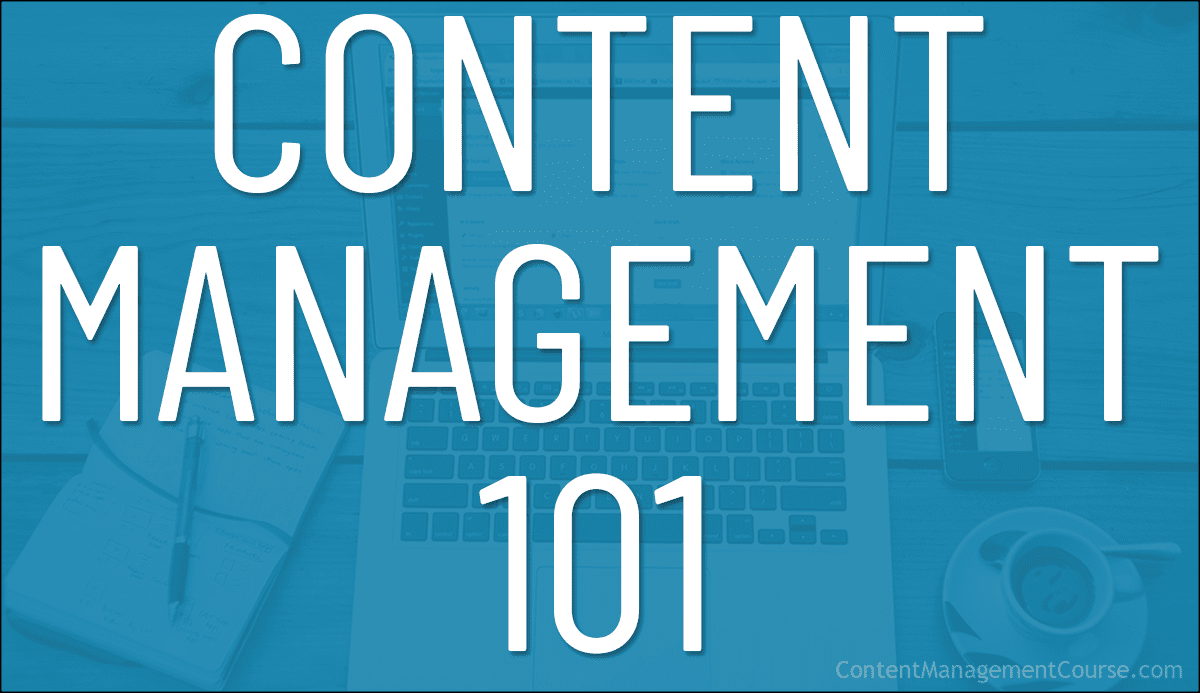
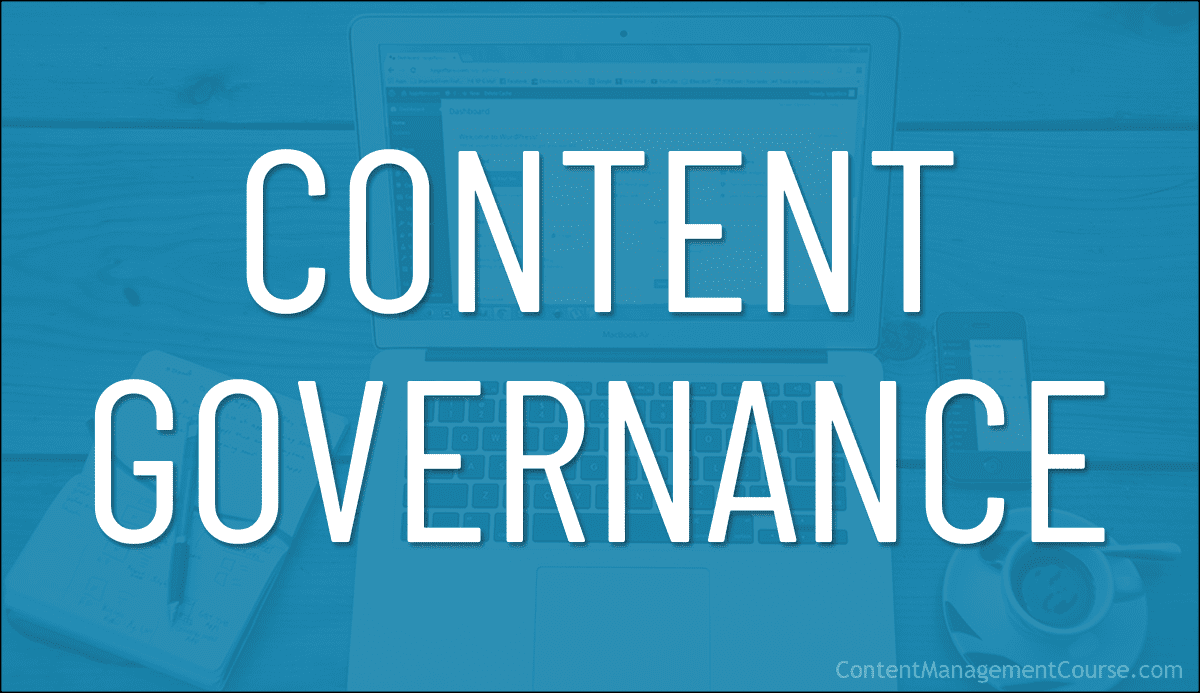
 Content governance is the process of establishing rules and guidelines for creating, editing, and publishing content.
Content governance is the process of establishing rules and guidelines for creating, editing, and publishing content.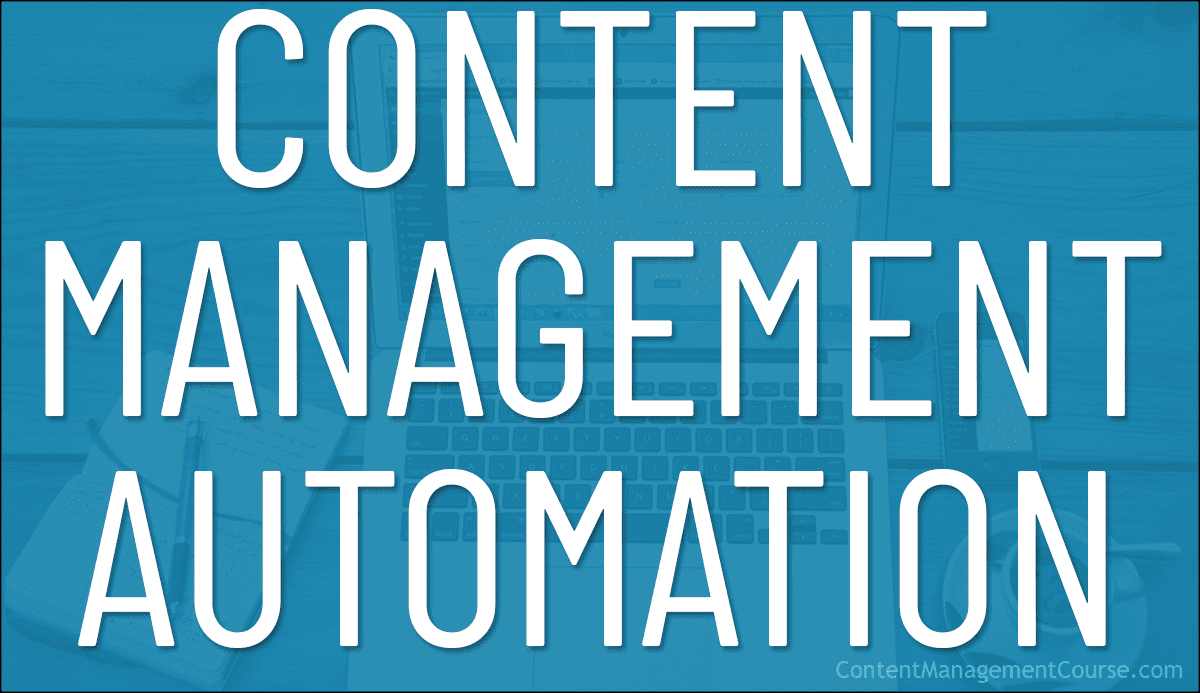


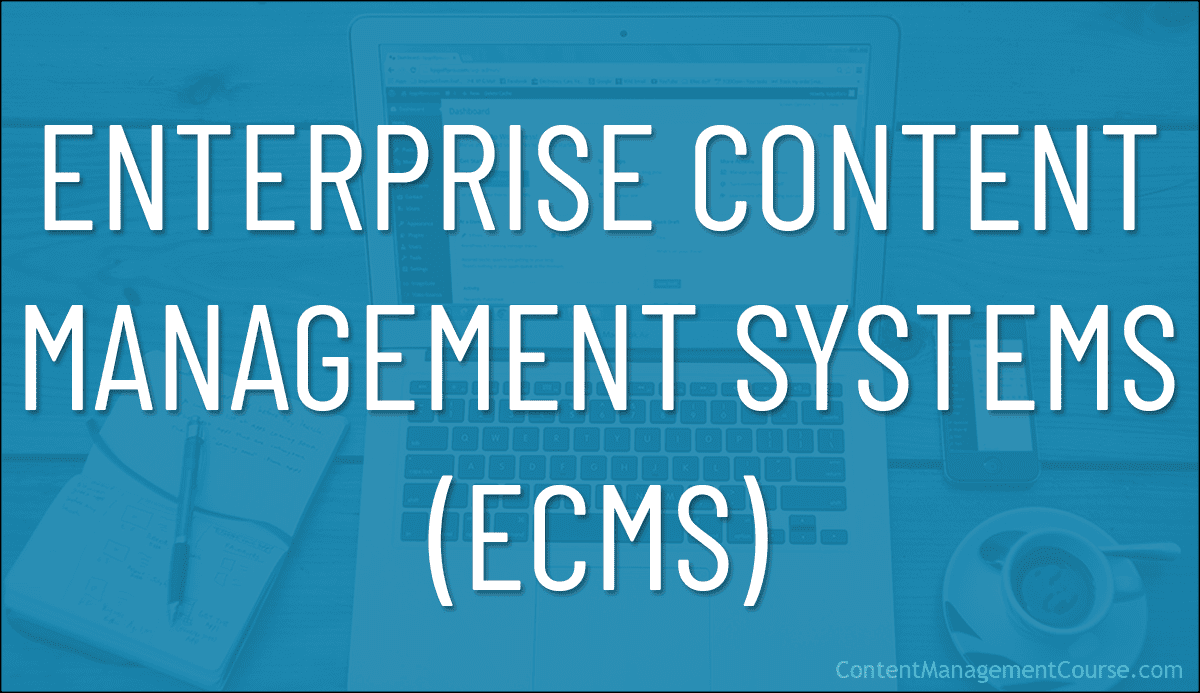
 Learn what an Enterprise Content Management System (ECMS) is, the benefits and key features of an ECMS, and how to choose the best ECMS platform for your needs.
Learn what an Enterprise Content Management System (ECMS) is, the benefits and key features of an ECMS, and how to choose the best ECMS platform for your needs.







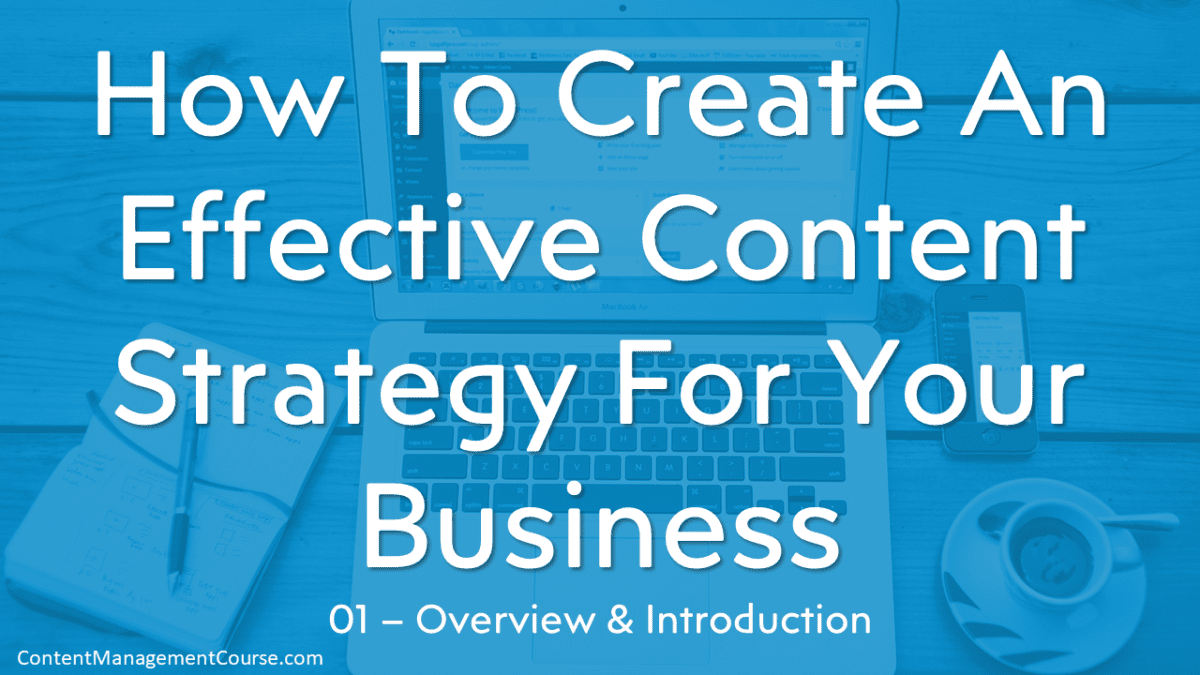
 This is Part 1 of our free
This is Part 1 of our free 




















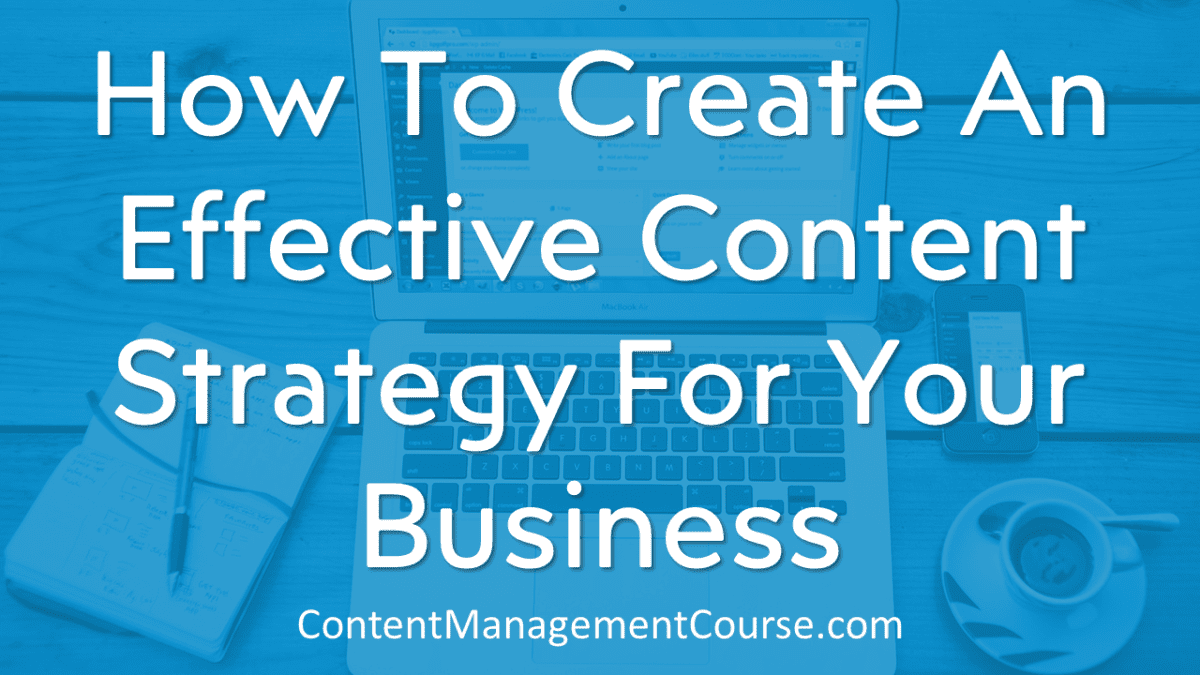














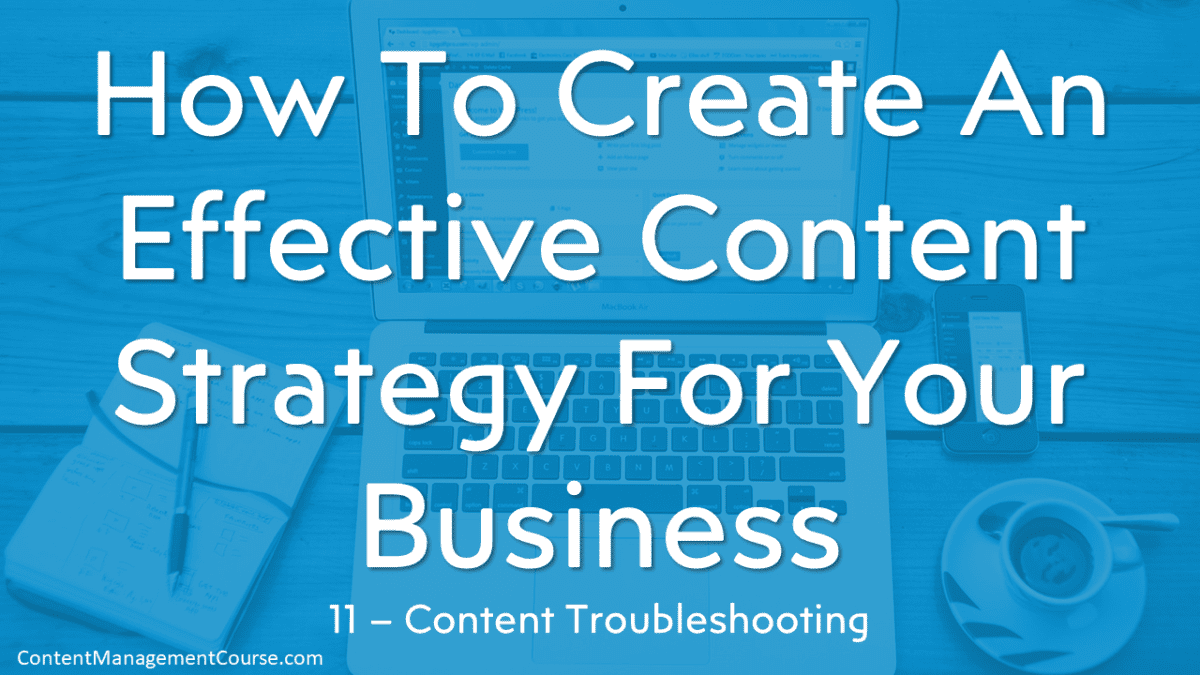






















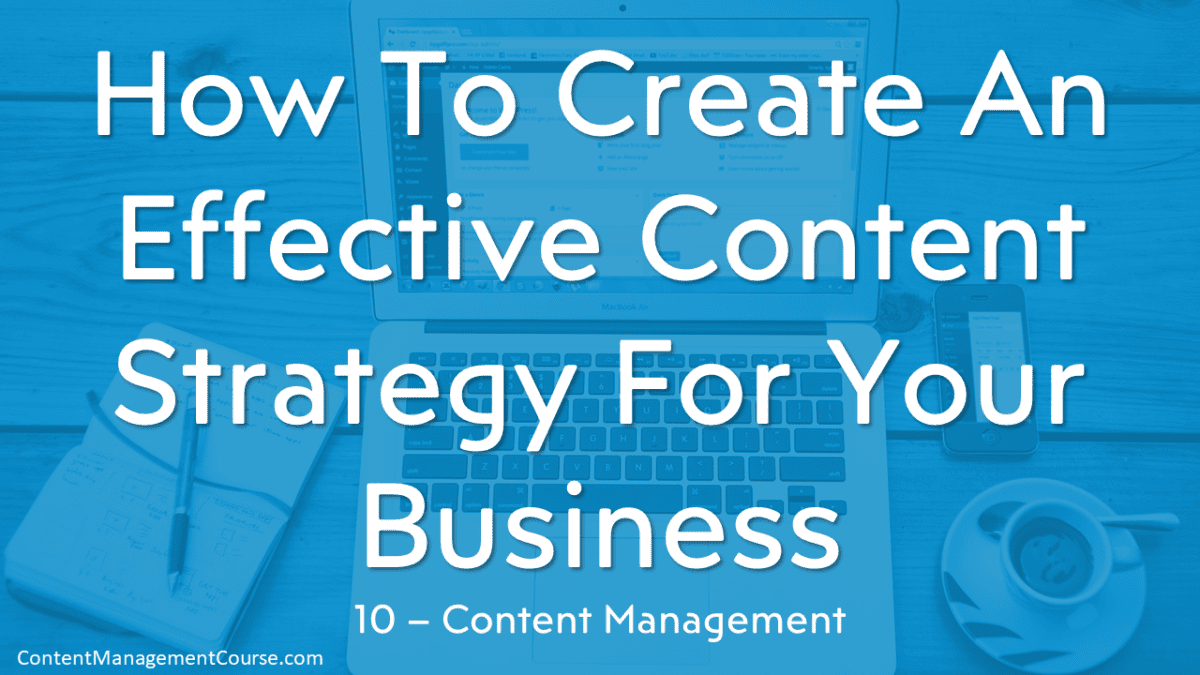
















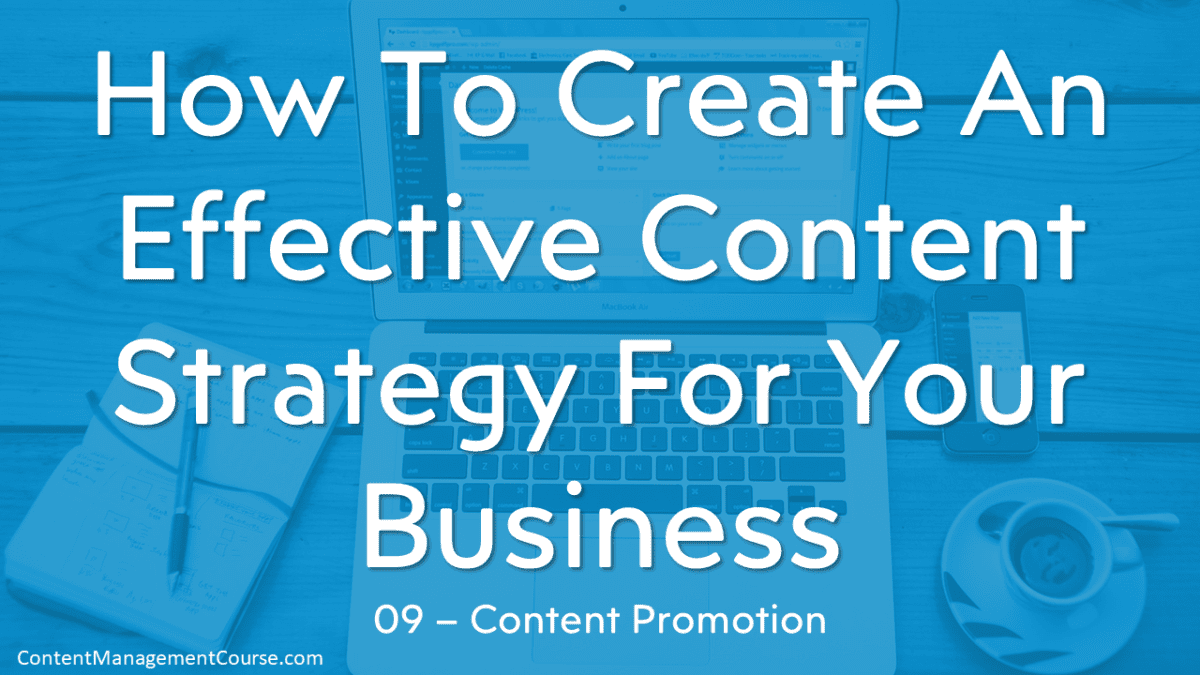











 So that’s all for this lesson.
So that’s all for this lesson.































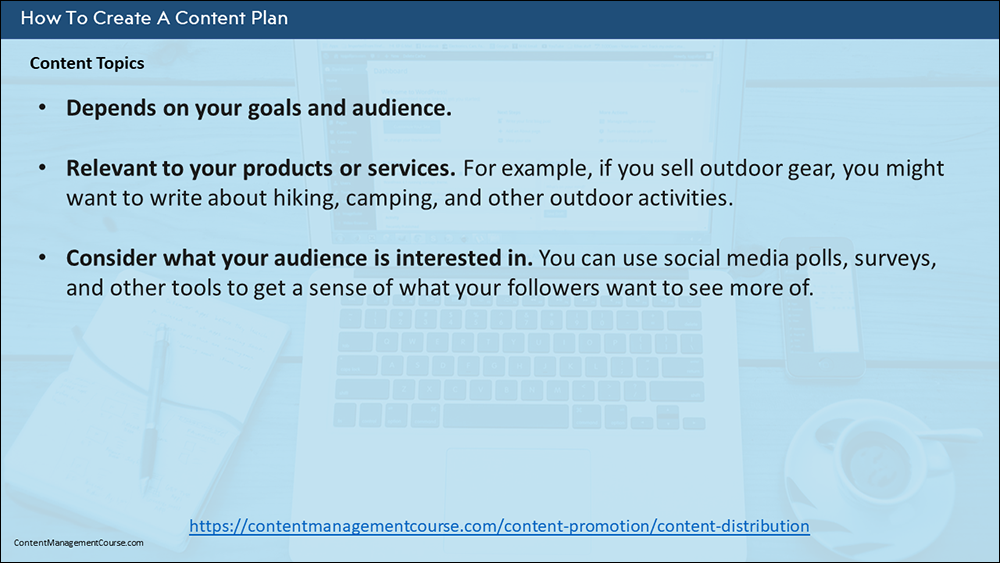












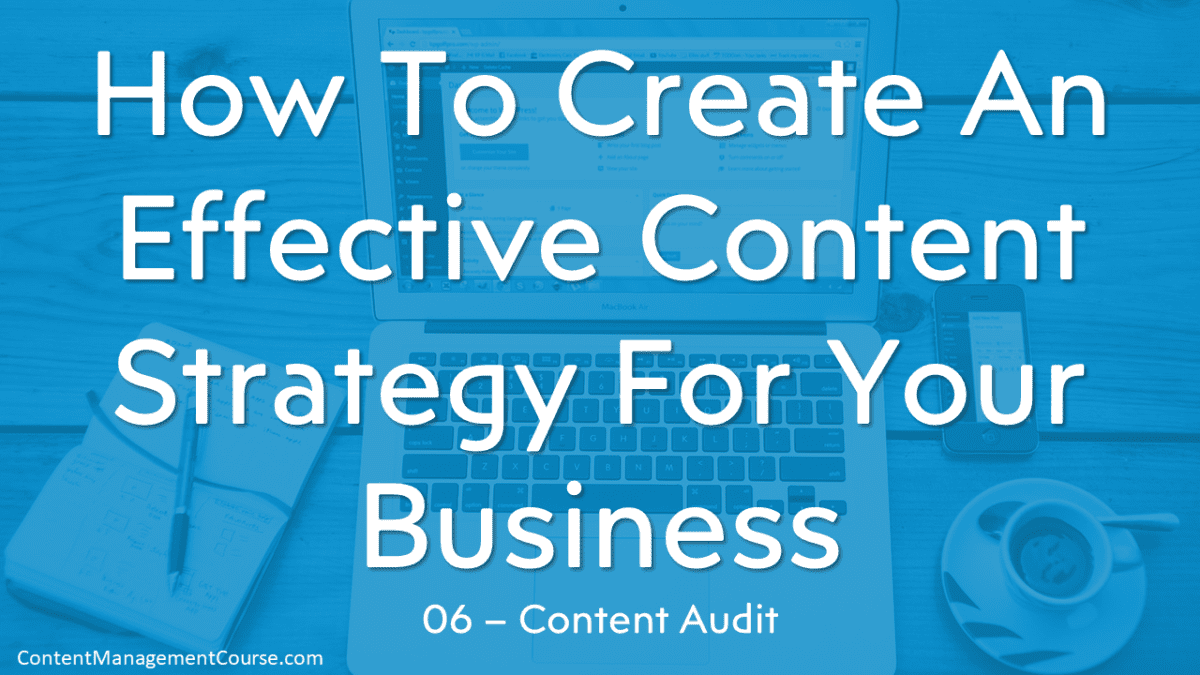






















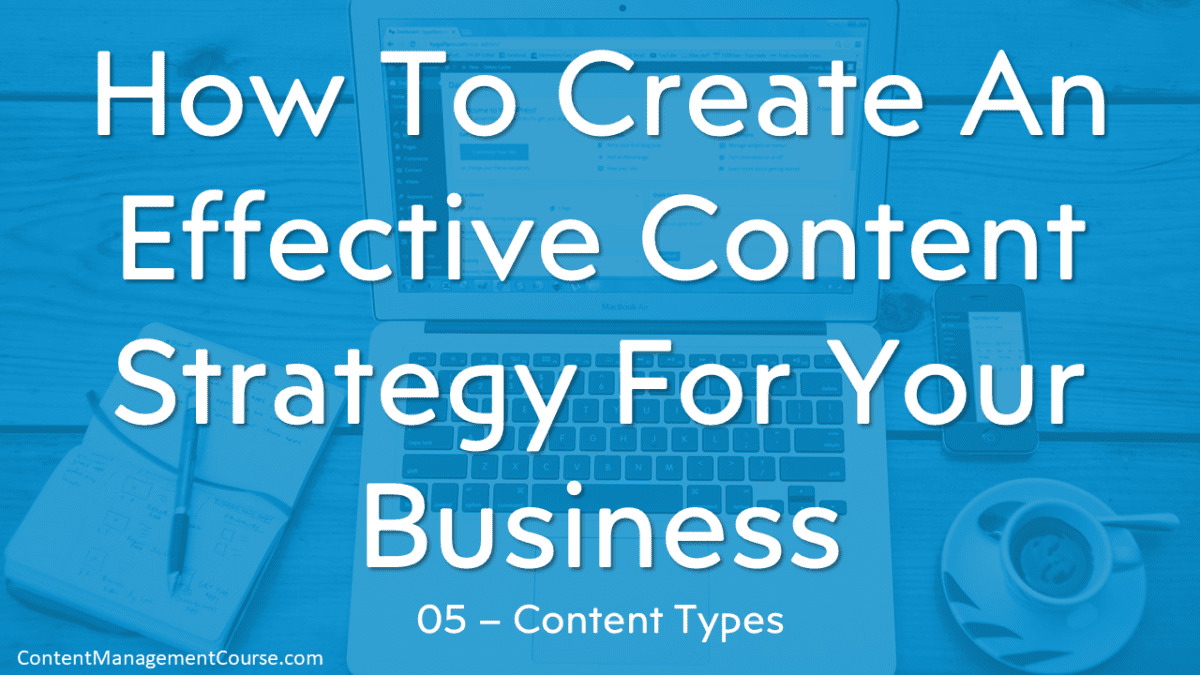



 Content formats include not only common formats like text, images, video, and audio but also interactive formats, virtual and augmented reality, and live streaming.
Content formats include not only common formats like text, images, video, and audio but also interactive formats, virtual and augmented reality, and live streaming. What I do want to cover in this lesson are the key things to consider when making decisions about which content types you will use.
What I do want to cover in this lesson are the key things to consider when making decisions about which content types you will use.






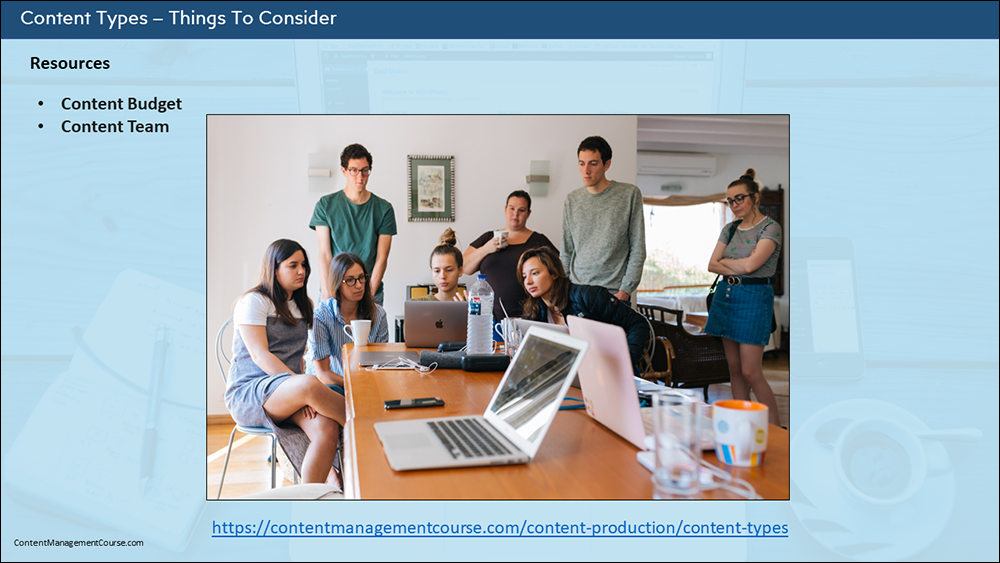


 In the next lesson, we’ll look at doing a
In the next lesson, we’ll look at doing a 












